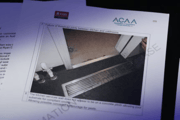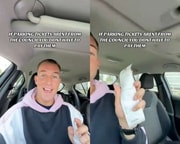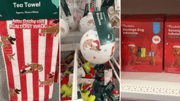SDC Rewards Member
Upgrade yours now
Sydney man warns shoppers after spotting easy-to-miss detail on the label of a popular Woolworths chicken buy
Sydney man warns shoppers after spotting easy-to-miss detail on the label of a popular Woolworths chicken buy
Chicken mince has to be one of the most versatile proteins on the market. It's a leaner alternative to beef mince, and equally as delicious. It’s also super budget-friendly and can be used in a variety of dishes such as rissoles, burgers, meatballs, and salads. Makes sense that it's such a popular item on everyone’s grocery list..
If, like us, you’re one of those people keeping packs of chicken mince in the freezer, ready to be chucked into your favourite meal at any given point, you might want to check the product label before putting it in your trolley. One Woolworths customer noticed an easy-to-miss detail on the back of a popular packet of chicken mince that may raise a few eyebrows.
The Sydney shopper shared his discovery on Twitter, saying he was confused after closely inspecting the storage instructions on a packet of Woolworths Chicken Mince.
According to the label, the meat was "not suitable for home freezing."
The shocked Sydney shopper named Phil asked Woolworths to explain why the popular grocery item couldn’t be frozen at home.
“Your chicken mince has a warning on it ‘not suitable for home freezing, any idea why that would be?” The Twitter user asked.
“Maybe a previously frozen and thawed product? Could you find out for me, please?”
The Woolworths chicken mince packet says it is “not suitable for home freezing”. Credit: Twitter
A Woolworths spokesperson told 7NEWS.com.au that the "no home freezing" recommendation only applies to chicken mince from one of the company's suppliers.
"Storage instructions are provided on our labels to help customers follow the right directions at home to ensure food safety and maintain product quality," the spokesperson said.
“One of our chicken mince suppliers freezes the meat as part of its production process, and accordingly, it is not recommended the mince be frozen after purchase.”
As it turns out, only one Woolworths chicken mince supplier follows this procedure, and not all Woolworths chicken mince will include this information on the label.
Nonetheless, we urge everyone to always check the packaging label for storage instructions to avoid food poisoning or other hazards.
And, in light of this incident, we thought it was a good time to remind you of the dos and don'ts of chicken food safety.
1. Don’t wash raw chicken before cooking it
This might shock you but did you know that raw chicken meat doesn’t need to be washed before cooking it? It actually shouldn’t be washed. When you wash raw chicken, you risk splashing chicken juices and any accompanying bacteria around the kitchen onto your prepared foods and utensils. But how can I make sure that the raw chicken I bought is clean? Well, modern chicken processing practices ensure that raw chicken meat reaches your home with as little bacteria on it as possible. While some bacteria may remain, it is safe and absolutely preferable to consuming raw chicken juices.
2. Cook chicken thoroughly
While this may sound obvious, it is absolutely worth mentioning! Make sure to thoroughly cook the raw chicken to kill the bacteria. If you have a food thermometer, check the temperature of the chicken meat. It should reach at least 75 degrees Celsius when inserted into the deepest part of the meat. If you don’t have a thermometer, use a fork or skewer and insert it into the thickest part of the meat. The juices should run clear and not pink
3. Don’t defrost frozen chicken on the bench
Never thaw your raw chicken meat on the bench. It should be thawed below 5 degrees Celsius, which means in the fridge or by using a microwave. While the microwave is the fastest option, it can damage your chicken if you’re not careful. So the easiest way is to defrost it gradually overnight in the fridge to maintain the safety and quality of the meat.
4. Don’t let chicken meat come in contact with other foods in the fridge
Always put the chicken in a container to avoid cross-contamination with other food items in your fridge. This way, raw chicken juices can’t drip onto other foods.
5. Wash your hands, knives, chopping boards, and containers after cooking
If you think the risk of cross-contamination ends after cooking the chicken meat, think again. Cross-contamination from whatever came in contact with the raw meat before it was cooked still exists. So you should wash knives, chopping boards, most importantly your hands, and anything the raw meat touched. A great tip is to have utensils and boards specifically for raw meat or clean them immediately after use and before use on anything else.
6. It’s safe to refreeze raw chicken
For those wondering, yes, it’s safe to put the defrosted chicken back into the freezer, but only if the chicken was defrosted under 5 degrees celsius and wasn’t ‘defrosting’ for longer than 24 hours at this temperature. The myth that it is not safe to refreeze chicken meat that has been defrosted arises from two issues: quality and safety. While it’s safe to refreeze the chicken meat that has been defrosted below 5 degrees Celsius, freezing and refreezing chicken meat may affect the meat’s quality.
For more tips for safe handling and cooking of chicken, go to http://www.chicken.org.au/foodsafety/.
Last edited by a moderator:





